
S&P by your side
-
Where can I purchase S&P products?
You can purchase our products through official distributors. You can find your international distributor in the section International Distribution.
-
How can I find product instructions manuals?
To find product manual you need to select the product you need on the Product section of the website and move to the 'Downloads' section available on all product pages.
-
How to select a fan in EasyVent?
Selecting a product in EasyVent is very simple, you only need to go to the Selectors section and determine the parameters. You can find out more about EasyVent on this page or check out the latest news from the selection software on its blog.
-
Where can I find the wiring diagrams of a product?
The wiring diagram can be found inside the manual of each product. If you don't have the manual physically, you will find it on the website in the 'downloads' section of all the products.
-
What is the ErP? Which products are affected?
The Energy Efficiency Directive 2012/27/EU modifies the Ecodesign Directive 2009/125/EC (ErP Directive) developing a new framework of Ecodesign requirements for energy-related products. This directive takes part into the 2020 strategy, according to which energy consumption must be reduced by 20% and the renewable energies quote should increase in a 20% by 2020. It concerns Ventilation Units, i. e. electricity driven appliances equipped with at least one impeller, one motor and a casing. Intended to replace used air by outdoor air in a building or a part of a building.
-
What equipment is suitable for installation in a bathroom?
In order to choose the most suitable product, the following aspects must be taken into account: the dimensions of the bathroom, the possible location of the extractor fan, especially if it is to be placed on top of the bath or shower, the possible installation, the diameter and number of elbows of the extraction ducting up to its outlet in order to determine the required airflow, as well as the appropriate type of extractor (axial or centrifugal depending on the installation) or if a 12 V fan is required.
-
What is an ATEX fan? What is it for?
An explosive atmosphere is a mixture of air, under atmospheric conditions, of flammable substances in the form of gases, vapours, mists or powders in which combustion spreads to the unburned mixture after ignition.
The identification of the areas and type of risk must be carried out by a specialist technician. For the ventilation of these areas, ATEX fans are required which are specially designed for this purpose. In order to choose a suitable ATEX fan, information about the atmosphere where the fan is to be installed is required, including information about the kind of fluid to be transported (gases or dust). -
What is a heat recovery unit?
A basic ventilation system consists of removing contaminants from a building by removing air from contaminated or damp spaces and expelling it to the outside. In this way, an energy expense is produced due to the energy contained in this extracted air.
To minimise these losses, ventilation systems can have a heat exchanger to recover much of this energy, transferring heat from hot to cold fluid.
In this way, in winter the incoming air will be introduced at a higher temperature and in summer, if there is an air-conditioning system in the building in question, the air can be cooled. -
What is a jet fan and how does it work?
A jet fan is an impulse fan designed to induce large volumes of air in car parks, tunnels and all kinds of large enclosed spaces.
The operating principle of a jet fan is based on preserving the amount of movement by passing through them a low flow rate at high velocity. Thanks to the induction phenomenon, this low flow rate will be transformed into a larger volume of moving air at a lower velocity.
 Bathroom Extract Fans
Bathroom Extract Fans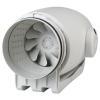 In-line Duct Fans
In-line Duct Fans Wall or Window Extract Fans
Wall or Window Extract Fans Heat Recovery Units
Heat Recovery Units Whole house Extract Units
Whole house Extract Units Acoustic Cabinet Fans
Acoustic Cabinet Fans Roof mounted fans
Roof mounted fans Kitchen Extract Fans
Kitchen Extract Fans  Kitchen Extract Hoods
Kitchen Extract Hoods 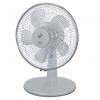 Comfort Cooling Range
Comfort Cooling Range Hand and Hair Dryers
Hand and Hair Dryers  Air Handling Units
Air Handling Units Plate Mounted Axial Flow
Plate Mounted Axial Flow 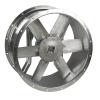 Cylindrical Cased Axial Flow Fans
Cylindrical Cased Axial Flow Fans 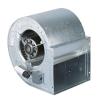 Centrifugal Direct Drive Fan
Centrifugal Direct Drive Fan  Parking Ventilation
Parking Ventilation  Smoke Extract Fans
Smoke Extract Fans  Atex Fans for Explosive Hazardous
Atex Fans for Explosive Hazardous  Heating Industrial Range
Heating Industrial Range  Backward curved centrifugal fans
Backward curved centrifugal fans High pressure centrifugal fans with backward curved impeller
High pressure centrifugal fans with backward curved impeller High pressure centrifugal fans with forward curved impeller
High pressure centrifugal fans with forward curved impeller Centrifugal fans with forward curved impeller
Centrifugal fans with forward curved impeller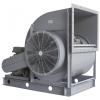 Double inlet centrifugal fans
Double inlet centrifugal fans Radial Centrifugal fans for transportation of materials
Radial Centrifugal fans for transportation of materials Centrifugal fans for furnace applications
Centrifugal fans for furnace applications Mounting Accesories
Mounting Accesories  Electrical Accessories
Electrical Accessories

